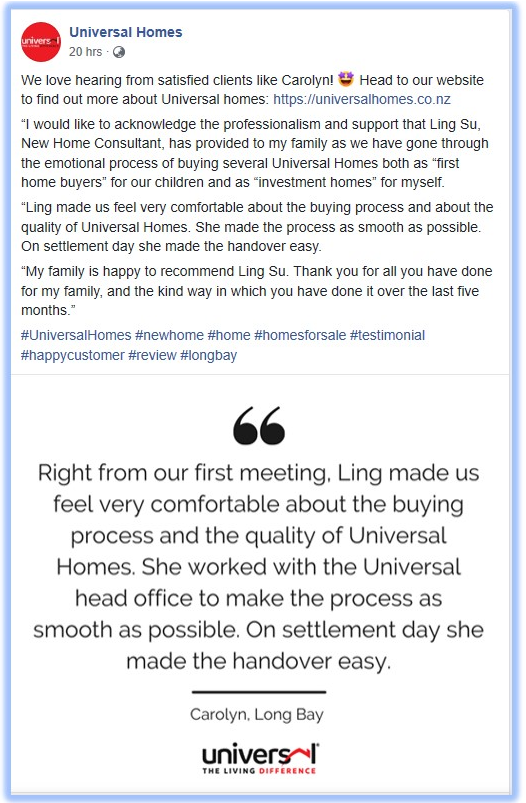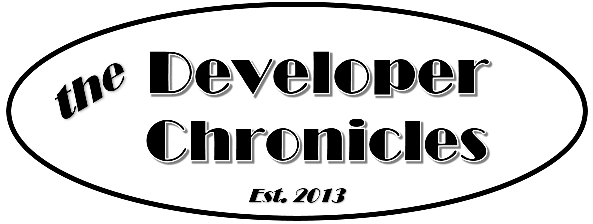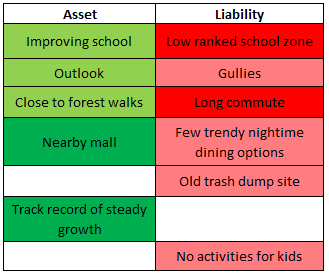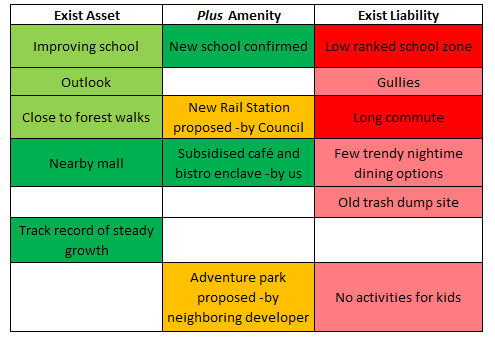New Tax Announcement
In March 2021 the New Zealand government introduced a new tax for Long Term Accommodation Service Providers (LTASP). LTASP commonly but technically incorrect are also known as Property Investors and often referred to, completely inaccurately, as Property Speculators.
I use this term LTASP based on the writings of Thomas Piketty, an expert in researching income and wealth inequality, who clearly states in his ground breaking book Capital that owning and providing a house for rent is a very productive service business. For me that puts that debate to bed (deathbed). Just as a supermarket as a business provides the human right of food, a LTASP as a business productively provides the human right of shelter – which enables it inhabitants to consume housing goods and grow their own productivity.
The tax is simple (although I suspect the final details at the end of the year will be very complicated): on existing housing you can no longer claim interest as a deductible expense. Your profit is now rental income, less expenses (excluding interest you must pay on the investment loan).
However, just to start to complicate things, this deductibility will still be allowed on new build property moving forward. How all the details of this working is anyone’s guess -given by definition a new property eventually becomes existing. Therefore, the first investor of a new build may get an advantage, but when they come to sell it the next investor won’t and will adjust their purchase price accordingly. That will have some impact on the new build investors willingness to pay a price in the first place, albeit the emotion of residential property and the thinking, that is 5 or 10 or 20 years off may not translate to any actual discount.
Hit a Nerve (in the butt, right below the back pocket)
That announcement sent me and at least 120,000 other people who are LTASP in New Zealand ballistic, not to mention economists and tax professionals who simplify could not understand the logic. A cashflow expense which you cannot deduct, now creating an accounting profit that the business owner must find additional cashflow funds to pay each year.
Put another way, anyone who runs a LTASP business (yep being a property investor in the simplified lexicon) that has debt on it will now have to front up with more cash. And that means to meet bank criteria for serviceability they will need to tap (or increase) more of their income to cover that new tax expense.
I may get into the dollars and cents of this financial perversity in a later post, as well as the implications and unintended consequences. There is plenty written about it, albeit not much without a doss of vested interest opinion or worst vitriol attached. Tony Alexander presents the best independent view here (in my view).
But, why do I care so much?
After a tirade of Linked Posts (on this vexing nuclear bomb of political ideology in action), by yours truly, people have been questioning – and I paraphrase with a degree of literary license:
“Why do you care so much about this new tax on interest deductibility?”
“You are in property development, your target market includes first home buyers, you produce new homes – they are all exempt? So why do you put yourself out there so much?”
“Why don’t you just focus on supply and promote what you have got – you could do so much better now- every investor in town will be hunting down your new properties and caps have increased?”
“You should be like other developers and congratulate all the new first home buyers that have been enabled and all the investors that may have previously only focused on existing prices?”
That’s because I am in the property development business, and on the face of it Universal Homes, and myself personally, stands to make more money if indeed this new tax increase sales activity in the new build space. The inference, is just shut and get on with it, your company could do much better than others out of all this.
However, I have my reasons.
A Table Full of Interest.
Everyone is biased and has vested interests, so let’s look at mine straight up.
My family runs a LTASP (remember I defined this earlier: Long Term Accommodation Service Provider) business. Yes we own some rental properties and my wife is CFO, COO, property manager and fund manager. I get to crawl under subfloors if a leak sprouts (only once so far) and send my income and net assets to the bank for assessing serviceability and security of the debt.
So quite obviously this new penalty tax costs me $ each year, that I will have to cashflow out of money that would have been used to reduce debt.
It also delays our ability to expand the business. Ironically, the next expansion intended to be a brand new universal home.
It also means -that since I am all-in, fully invested (not only in property, but mainly) with a buffer for the unexpected or presumably likely interest rate increases- that we will have to reduce spending (CFO has been advised) or cash out investments (last resort) or add debt (not happening) or find additional income….
The risk-reward retirement strategy might need a rethink as well, although I’m intending to see this out with the properties we have, as I am sure there are plenty of twists and turns yet over years to come and like any good LTASP we have a long term investment horizon. The only properties this business has sold were two owned for 11+ years, and that’s because the business partner wanted to cash out.
Regardless of what you think, LTASP is a legitimate business, and it has the added benefit giving people a roof over their heads. If you knock that business you better look under your own hood first. I am proud to own property that I market out to potential renting occupiers and sign tenancy agreements promising them my accommodation service for a weekly fee. This is a noble business.
And a Tax Beneficiary?
However, I also work in property development building hundreds of the houses that First Home Buyers (the ones that need a hand, not the ones you have come home with a wad of greenbacks or sterling, pretending to be in financial stress buying a house when they are flush all over the place) want and do purchase. We also develop Kiwibuild and Axis which are restricted to owner occupiers. Many of the houses we develop also suit investors, albeit, in total our investors last year ran at only 17% of total sales.
So, Universal Homes could be a big beneficiary of this tax. Because this new tax aggressively penalizes anyone buying existing (although most of that is now already encapsulated as a one off financial hit to existing owners) whilst almost forcing new investors to buy new. So more people buying new, more people buying Universal product!
Rosy but still coloured with red ink.
Its not all rosy for new build buyers though – if you buy your first home, now you do need to consider who you might be selling that to in the future to maintain value. Because then the house definition goes from new to existing and the value of the existing will depend if you are in a more home owner occupier desirable location/product type or a more tenant occupier location/product type. i.e. the predominantly likely buyer in 3, 5 or ten years time.
Sometimes the predominant buyer will be LTASP, other times owner-occupier and others even split – think working/middle class neighborhoods for houses and increasingly terraces and units and lower rise apartments. Other times is skewed one way heavily – LTASP primarily in some lower decile suburbs and inner city apartments or owner occupier primarily in expensive neighborhood standalone homes and townhouses. I may expand on this later if I can find some data to support my assertion and see if it is making a difference over the next few months. It might just all get loss in the noise.
So the fact that you might occupy a home you buy yourself or rent it out is largely immaterial to what the market value of that property will be at the time you sell it (or for valuations on the way through). The market will determine that value based on location relative to if it’s a home owner occupier area/product or a tenant occupier area/product. i.e. not all areas have the same home owner occupier versus tenantoccupier ratios.
With Universal product most of it is in that working/middle class demographic, that primarily suits owner occupiers selling to owner occupiers so Universal wins again. Although some suburbs over time do change, and a few out west that Universal built many years ago have more renters than owner occupiers compared to when they were first purchased.
All in all, the benefit I will get out of Universal benefiting from all this supposed extra demand is much more than the extra cashflow expense to the family LTASP business. So I should be a net winner, by a long way due to this tax – especially if I keep future purchases as new product and hold for a long time (which is always the goal of a prudent LTASP).
Passionately bemused
But, I still kick up a big fuss and are extremely angry. These are the reasons why I am bewildered with this new tax and think its simply a nightmare.
It’s illogical to me and almost every real financial and tax professional (not just layabouts with an opinion). An expense is an expense. This new penalty tax puts LTASP into a new paradigm that has no relationship to any other business. And if it was such a loophole, why retain the loop hole for a small proportion of new product and create a whole new two tiered system.
You (the NZ Govt) just punished 120,000 families trying to better themselves and their families under the legal rules of the day. In fact you drew on demonization in the media conveniently confusing investors with speculators to fuel the fury. You propaganded that investors were outbidding first home buyers causing home prices to rise. Well quite possibly, but no one really knows in an auction and it could have been other first home buyers outbidding each other. And what does that have to do with the other 119,500 investors who were no where near the auction room? And you did it with no warning, and you applied it to retrospective purchases and you said you were not going to raise taxes just six months ago prior to the general election.
Well someone needs to stand up for the middle class saving for their retirement, and their kids homes and keeping themselves out of state welfare. Many of these people are my friends, my staff, my associates. Some just purchased last year, spent money upgrading an old house so tenants could have a better environment and then get whacked with this burden.
The unintended consequences are loss of business confidence and faith, anxiety from all business and their employees on what is the next mess to be created in their industry, increasing costs and decreasing house supply and the actual effect on prices medium to long term. My hypothesis is any cost intervention hurts supply and will ultimately cause prices to rise.
To pay for the accounting profit, without additional revenue will mean cutting other expenses. This will hit retail and local tourism (as if either of them need that). Property managers will be made redundant and the owners will do that labour themselves. Worst will be all the financial and emotive stress – families will be ripped apart. Sure everyone should have a financial buffer for interest rate increases and the like, but quite simply this was unforeseen, beyond reasonable likelihood and stretches that buffer requirement to the next level. Maybe, just maybe there are few firesales…and that brings a lot of other issues in play.
Recent first home buyers should also be worried. Whilst in he long term I believe this will increase prices more than they need to, in the short term it could reduce house prices certainly in certain locations – especially regional New Zealand. Hey, but they are now existing owners so they don’t matter – do they?
I will be immersing myself into what happens from this point on – a little less passionately and more academically, perhaps.
The problem is supply. Not the 120,000 families who own property providing a service to occupying tenants. These LTASP have met the tenant demand where the government and developers still can’t.
And supplying is not getting easier. You can’t pick out a group and lambast them when constraints imposed on supply has nothing to do with them. Sure they might sell to a first home buyer, but then a tenant misses out. I can tell you now for every home buyer there are multiple tenants waiting in most locations. Why not focus on proactive positive supply measures.
At Universal we develop and it is just getting more and more difficult. We have been promised funding, (once with an accompanying press palaver on one of our site) only to have that withdrawn a year later when the press were not around. We submitted shovel ready projects to enable 1000 of ours and 13000 of others homes, but didn’t make the cut! Still a year on few shovel ready projects have seen a shovel! We were/are ready to go.
The problem is also forward demand. How much demand has been brought forward with people who had no where else to place money or decided no point doing anything but saving to buy a home due to Covid? A lot I reckon. Only time will tell, but without a substantial immigration surge post vaccine, this demand (for buying houses) could fall off fairly quickly, and prices will reach their natural cyclical peak, and either flatten or fall. In addition the Government are buying properties for state tenants out of the market, further restricting new and existing stock for first home buyers. That is ok, but let’s acknowledge that rather than fire all guns at the mom and dads (and men and women of whatever persuasion and family circumstance) LTASP business owners.
MOST IMPORTANTLY THOUGH
And this is why I am not going to now grease up the establishment and say this is a great tax for the interest of Universal homes to sell more homes or to promote ourselves as hand in hand with the government on this one. The fact is we don’t need to and we already have a great relationship with Kāinga Ora and build plenty of Axis and Kiwibuild homes. So we are already decent provider to first home buyers and – at least last week – can’t build fast enough to satisfy demand.
But MOST IMPORTANTLY it’s the disservice to Universal customers of the past that really irks me. 60 years of customers and now many have to go through this new penalty tax. They brought a home fair and square, some only a couple of years ago and now they are being asked to pony up cashflow on imaginary accounting profits. Or when they sell, they are at the disadvantage of selling an existing house -with different tax rules – now a newly created second class citizen to the next batch of new builds we deliver.
What’s to say our Universal new build customers of tomorrow, now at great advantage to Universal new build customers of just last year, won’t have a rule change also thrown in their face!
These are the customers, them and the 20,000 ones before, I and all the staff of Universal care about.
Just like Carolyn, from Long Bay, someone who cares about her children’s future and her financial security – an update I received just hours ago.

NZ Government (and all you keyboard warriors who wouldn’t know a doorknob from your own…) don’t dick them around please. Past or present. Sort out this tax in the detail, so it is at least not applied retrospectively.
Remember, there were supposedly no new taxes.





